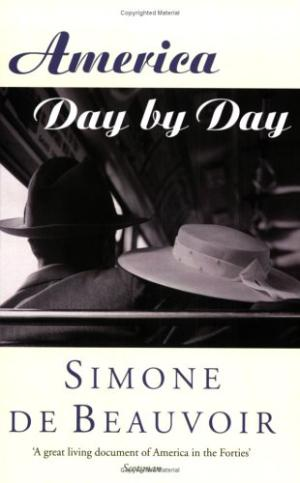 In 1947, French philosopher, novelist and feminist Simone de Beauvoir left her native Paris and spent four months in the United States. She had never been to the US before, and as she travelled from coast to coast she kept a diary. Re-published in English 50 years later it offers a fascinating view of America immediately after the war.
In 1947, French philosopher, novelist and feminist Simone de Beauvoir left her native Paris and spent four months in the United States. She had never been to the US before, and as she travelled from coast to coast she kept a diary. Re-published in English 50 years later it offers a fascinating view of America immediately after the war.
De Beauvoir starts off, inevitably, in New York City. In the early 21st century, we can only imagine the contrast between 1940s New York and 1940s Paris. At first, the other-worldiness of the US’ most famous city is almost too much for her. After all, New York does not need her; she feels she is not there at all. She soon leaves for Chicago – a city that she finds more appealing, more real. Her perception is enhanced somewhat by the presence of author Nelson Algren. She had an on-off affair with Algren for some 17 years, and it all started here. None of the lurid details are in this book, but you can readily see how Algren’s appreciation and knowledge of the seedier side of Chicago life appeals to de Beauvoir.
When she reaches the west coast, the contrast between the two cultures is thrown into starkest relief. There are far fewer of the intellectual encounters that punctured her time in New York, rather it is the spectacular landscape that captures her imagination. However, de Beauvoir continues to strive to understand the lack of engagement with the social and political issues of the day, both at home and abroad.
Next stop, the southern states where the issue of racial segregation lies at the heart of the whole section. The sub-plot of this book is de Beauvoir’s attempts to see good jazz in every American city, but so often she finds herself listening to black musicians playing mainstream music for the paying white population. These experiences demonstrate that it was not just a problem of legislation, but of perception. In many ways, this is the saddest part of the book. Throughout her trip, de Beauvoir is caught – like so many Europeans – between admiration and shock for what America is.
There are some long passages in the book where she drifts from some astute observations to some much deeper philosophical arguments. These mini essays on existentialism and other ideas are interesting however, and well worth reading.
Perhaps the scariest aspect of the book is that reading it 55 years after her trip, much of it could be transplanted into the present day and no-one would notice. Yes, it is true that things have changed – most notably by the civil rights movement – but you can’t help thinking that there are plenty of European intellectuals who could do a similar trip to the US today and come away with a similar book.
Overall verdict: A glimpse into a French intellectual’s eye-opening trip.
Phoenix, 1998. Translated from L’Amérique au jour le jour, Editions Gallimard, 1954
